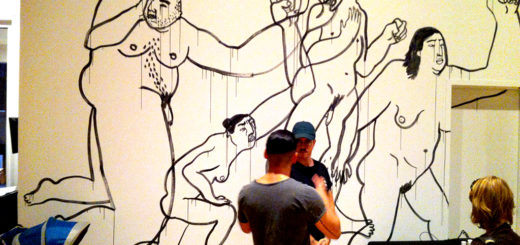L’idée – Poster REMIX d’affiches – the idea :
EN
With the objective of having a regular creative practice, I had the idea of locating posters found in archives, books and elsewhere and remixing them into new posters that adresse contemporary issues. This project is ongoing with the goal of remixing two posters each month. If you have the inclination and would like to participate in this creative project, do not hesitate to find a poster that you like and remix it into something new. Send us both versions and we will add them to the REMIX project page.
FR
Afin d’avoir une pratique de créations quotidienne, j’ai eu l’idée de trouver des affiches historiques provenant d’archives, de livres ou d’ailleurs et de les remixer/transformer en nouvelles affiches qui abordent des sujets contemporains. Ce projet se fera de façon continuelle avec l’objectif d’en produire deux par mois. Si vous avez l’inclinaison de participer à ce projet créatif, n’hésitez pas à trouver une affiche qui vous plait et d’en faire un REMIX vous-même. Envoyez-nous les deux versions et nous les ajouterons sur la page du projet.
===
Patch SOURCE patch : « Au moins y nous reste l’doigt d’vote » Illustration by/par Mathieu Chartrand, silkscreen print on canvas/sérigraphie sur canvas by/par Coop Coup d’Griffe. 5″ X 8″ (2012 ?)
Bannière REMIX banner : « Au moins il nous reste le doigt d’vote ». Série de bannières «MTL» banner series. 305cm X 240cm. (2017)
- SOURCE : Au moins y nous reste l’doigt d’vote
- REMIX : Au moins il nous reste le doigt d’vote
—
Affiche SOURCE poster : Antifaschistische Aktion poster, «Fight Capitalist War, Fight Capitalist Peace, 1 Mai 2003, Berlin » by anonymous artist (2003)
Affiches REMIX posters : « From Protest to Resistance », Creative Commons, 11″ X 21″ (2015).
- SOURCE : 1 mai Berlin 2003
- REMIX : 1 mai Montréal 2015
- REMIX : 15 mars Montréal 2015
- REMIX : 1 mai Montréal 2015
- REMIX : 1 mai Montréal 2015
- REMIX : 15 mars Montréal 2015
- REMIX : 1 mai Montréal 2015
—
Affiche SOURCE poster : Inkworks Projet poster «End Apartheid. South Africa Must be Free. Divest Now » by/par Lincoln Cushing (1985).
Affiches REMIX posters : « End Israeli Apartheid. Palestinians Must Be Free. Divest Now ! », Creative Commons (téléchargement .pdf download), 11″ X 17″ (2015).
- SOURCE : End Apartheid in South Africa 1985
- REMIX : End Israeli Apartheid 2015
- REMIX : End Israeli Apartheid 2015
- REMIX : End Israeli Apartheid 2015
- REMIX : À bas l’apartheid israelien 2015
- REMIX : À bas l’apartheid israelien 2015
- REMIX : À bas l’apartheid israelien 2015
—
Affiche SOURCE poster : Project Underground Inkworks Press, « Don’t Let Shell Kill Again » by/de Design Action (1996).
Affiches REMIX posters : « Don’t let TransCanada/Enbridge Spill Again », Creative Commons (téléchargement .pdf download), 20″ X 24″ (2015).
- SOURCE : Don’t Let Shell Kill Again (1996)
- REMIX : Don’t Let TransCanada Spill/Kill Again
- REMIX : Don’t Let EnBridge Spill/Kill Again
- REMIX : Don’t Let TransCanada Spill/Kill Again
- REMIX : Don’t Let EnBridge Spill/Kill Again
—
Affiche SOURCE poster : Greenpeace, « We are opposed to oil drilling and exploration off our coast », unknown artist (1970).
Affiches REMIX posters : « Nous, nous opposons à l’exploration et à l’exploitation pétrolières dans le St-Laurent », Creative Commons, 11″ X 17″ (2015).
- SOURCE : We are opposed to offshore drilling (1970)
- Nous nous opposons à l’exploration (2015)
- Nous nous opposons à la fracturation (2015)
- Nous nous opposons à la fracturation (2015)
- Nous nous opposons à la fracturation (2015)
—
Carte postale SOURCE postcard : World Wildlife Fund, « A single can of paint can pollute millions of litres of water. », unknown artist (unknown year).
Carte postales REMIX postcards : « Transcanada/Enbridge Welcome » & « Montréal by Denis Coderre, 8 billion litres per week. The shit is here! », Creative Commons, 6″ X 4.25″ (2015).
- SOURCE : WWF – Paint polutes rivers
- REMIX : Bienvenu chez nous TransCanada
- REMIX : Bienvenu chez nous TransCanada
- REMIX : Denis Coderre, The Shit is Here





































